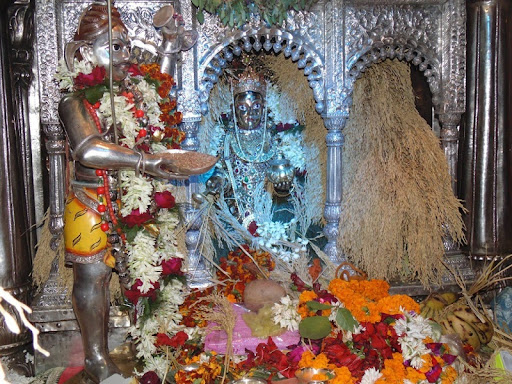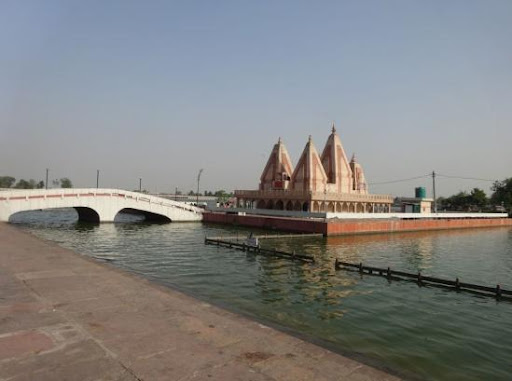Temples of Mahānirvaṇi Akhāḍā
Kashi Annapurna Temple, Varanasi

The Annapurna temple in Kashi (Varanasi) is world famous. The Divine Mother sits here as Goddess Annapurneshwari, the Goddess of food. Extolling this glory of the Divine Mother, The Annapurna Shatanama Stotram (devotional song) describes Her through 108 different names and The Annapurna Sahasranam describes her through one thousand names.
It is considered that She does not eat until the time Her devotees have been fed in this temple of Hers. In this temple, she is serving food to Paramasiva himself as seen in the picture. The book “Annapurna Vrat Katha” from Hindu History has
various incidents related to Her glory and helps Her devotees get rid of their own problems in life through listening to these stories. This temple is situated adjacent to the most famous Kashi Viswanath temple. Annapurna Mata is revered as the queen of Kashi and Lord Paramashiva as the King of the Kashi. In this temple, everyday noon, food is served to all.
Brahma Sarovar, Kurukshetra

Brahma Sarovar is an ancient water body sacred to Hinduism in Thanesar, in the State of Haryana in North India. Brahma Sarovar, as the name suggests, is associated with Lord Brahma, the creator of the Universe.
Significance
Hinduism lays emphasis on taking a holy dip in sacred water bodies for maintaining internal and external purity. According to the Hindu scriptures, taking a dip in the holy waters of the Brahma Sarovar during a Solar Eclipse is considered equal to the merits of performing thousands of Asvamedha Yajnas (ancient ritual of horse sacrifice performed by kings to establish their sovereignty).

History
According to Hindu History, Lord Brahma created the universe from the land of Kurukshetra (the land where the Mahabharata war was fought under the auspices of Lord Krishna) after a huge yajna – sarifical fire. The Brahma Sarovar here is believed to be the cradle of civilization that emerged. The sarovar finds a mention in Hinduism’s greatest epic – Mahabharata, citing its use by King Duryodhana (representing the evil forces that prevent one from realising enlightenment) to hide himself under its waters on the concluding day of the Mahabharata war soon after which he is slayed by Bhima with the grace of Lord Krishna.
